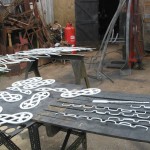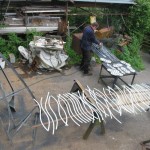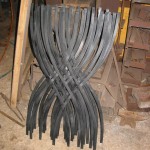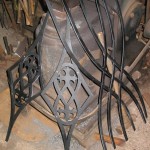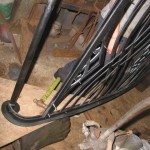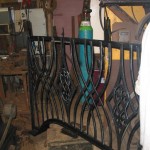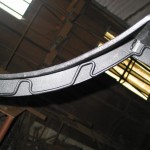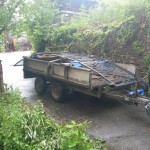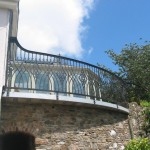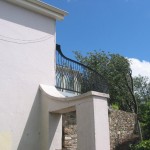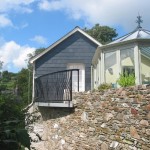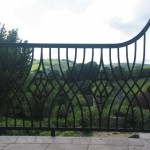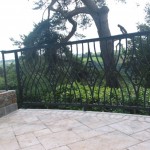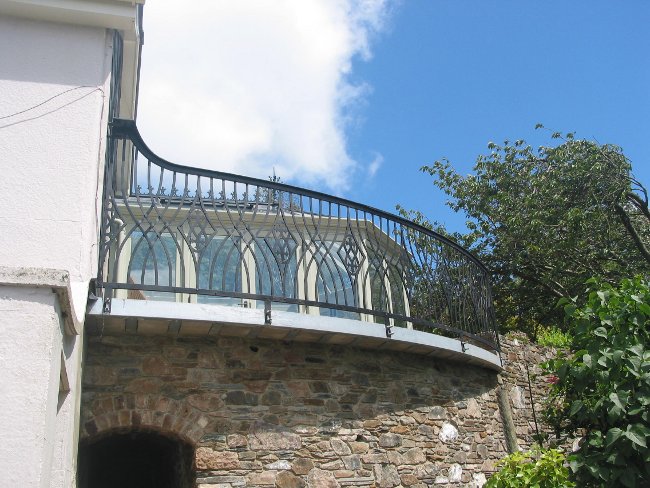
Balustrading for a new paved area with a drop.
We make quite a serious allowance for painting and finishing operations in our budgets; our normal procedure is that all components are made and test asssembled first and then disasssembled, grit blasted, hot zinc sprayed, tee washed and primed prior to rivetting/collaring (in stainless or copper) and applying second coat of micaceous oxide primer.
This procedure, while time consuming and quite expensive, provides a very good start in life for ironwork of any description and particularly so for forged work where it is not uncommon for there to be numerous points at which elements touch together to create secret and unpaintable crevices, seams or hollows, which will, without fail, cause problems that are very hard to remedy at a later date.
Shown below is the process of teewashing the elements of these rails after zincing; (see also our blog article in FAQs” How do you protect ironwork from rusting?”)
- zinced elements laid out
- tee washing zinced elements
Various stages in the assembly of the rail.
The design of the woven sections secured between flats left a gap between elements which needed some form of infill; it was like the last bit of the puzzle falling into place when the customer produced a photo of an old family napkin with a design which, with minimal tweaking, fitted into the gaps available.
- woven sections pre assembly
- motif sections pre assembly
- construction detail of underside of hand rail
- semi assembled
- detail infill housing system
The eventual solution to the transportation question;
- long, floppy, heavy and delicate thing delivery
The handrails’ swept up connection with the house drew on the form of the adjacent masonry buttresses.
- myrtle cottage rail overview
- buttress and rail
- side view
- infill detail
- return fixing detail
